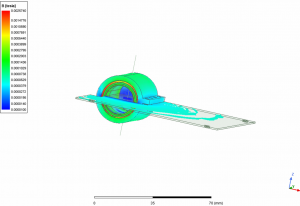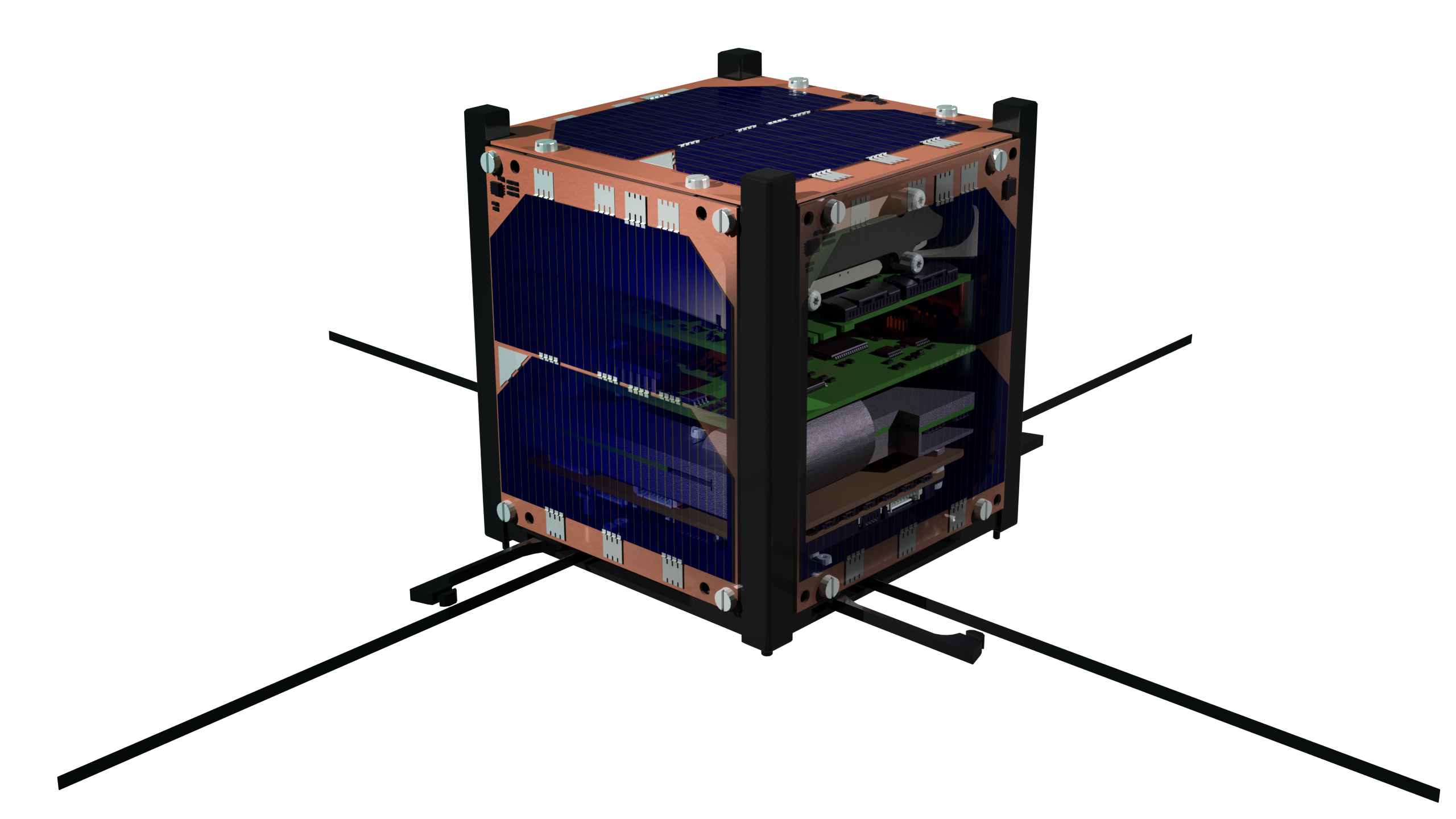Project

The main scientific aim of the UCAnFly nanosatellite is to explore the feasibility of novel magnetic measurement systems for space missions requiring tiny sensors and long-integration time, such as space-borne gravitational wave detectors mainly based on laser interferometry, but also in cold-atom precision interferometry.
Space observatories for gravitational waves, such as LISA, are equipped with dedicated on-board instrumentation capable of measuring magnetic fields with low-noise conditions at millihertz frequencies. The reason behind this is that the core scientific payload only works if the magnetic environment meets certain strict low-frequency requirements. For this purpose, a compact payload able to achieve the demanding low-frequency magnetic requirements for LISA will be developed for a 1U-CubeSat, which will make it possible to improve the technology readiness level (TRL) of the instrument.
Thus, the UCAnFly CubeSat will allow the in-flight low-frequency noise characterization of the system and make it possible to measure the capability of the instrument under harsh space environment.
Payload
The payload team is in charge of the “heart” of UCAnFly, the Science Unit, called Melisa-II. With two magnetoresistive sensors and different electronic noise reduction techniques, it has being developed with the goal of measuring the low-frequency noise behavior of the payload under the orbit environment (e.g., the effects produced by radiation at ultra-low dose rates over the mission lifetime.) The criterion defined to assess the success of the mission is based on the ability to detect magnetic field fluctuations below 10 nT/√Hz at 0.1 mHz. Thus, the payload team is responsible for the development and test of both the hardware and software required to fulfil the mission. Being the main in-house element is also the most challenging and critical part of our mission.

System Engineering
The systems engineer team is responsible for many things. Being a central point for all the different topics, the systems engineers help with the realization of activities that require an overall view of the mission. Some of the topics the systems engineer helps with are:
- Definition of Requirements
- Definition of AIV (Assembly, Integration and Verification) activities.
- Definition of a harnessing solution.
- Orbit Analyses
- Budgets (mass budget, energy budget…)
- CAD (Computer Assisted Design)
Structure
The aim of the structure subsystem is to ensure that it will withstand loads and vibrations that the CubeSat will be exposed to during the different phases of the mission. This is done by some different analyses and thanks to that, any structural deformation or failure case that may occur is studied. On the other hand, it is ensured that everything fits in a CAD (Computer Assisted Design) model, so major problems can be avoided regarding the final assembly.
Attitude Determination and Control Subsystem
Attitude Determination and Control Subsystem (ADCS) oversees stabilizing the CubeSat. In other words, to control and estimate the CubeSat’s orientation on space, UCAnFly uses a passive ADCS. This means that it uses magnets and hysteresis material to help the satellite to be orientated along Earth’s magnetic, so no battery consumption is needed.
Electrical Power Subsystem
The EPS subsystem (Electrical Power Subsystem) is responsible for the generation, regulation, and distribution of the electrical power of the entire satellite. Among the main tasks to be carried out are the sizing of the solar panels, the management of the power budget and the implementation of protection systems against short-circuit events.
On-board Computer
The On-board Computer (OBC) is the ‘brain’ of the satellite. This subsystem acts as a bridge that connects the other subsystems with each other. Thanks to the satellite software, the OBC is able to communicate and store the data of the different subsystems to later send the information to the Ground Station. It is in charge of coordinating and executing the functions that are required for the operations of the nanosatellite. It also performs housekeeping and monitoring to ensure the health and status of those subsystems.
Communication Subsystem
The Communication Subsystem is responsible for ensuring telecommunication between the CubeSat and the Ground Station. From here it can be received telecommands to control the satellite, send status information to the ground station, or transfer payload data. The team is working on UHF band, with the operating frequencies of 435MHz and 438MHz.
Ground Station
The Ground Station Subsystem is required in order to maintain communications, transmitting signal to the CubeSat (telecommands) and receiving signal from the CubeSat (telemetry data). Some of its activities include mission planning, analysis and archiving payload data. The GS subsystem will be in charge of installing and maintaining an antenna to point at the satellite and rather emit or receive the information.
The ground station is located near the Bay of Cádiz, at the Superior School of Engineering on the Puerto Real University campus. It will be part of the SATNOGS Network (Libre Space Foundation.)
Operations
The operations subsystem is responsible for scheduling the CubeSat activities, monitoring the CubeSat activities and subsystems. Moreover, it is in charge of TM and TC management in order to execute certain procedures in CubeSat operations, as well as train and test new procedures and situations. The subsystem is the one that is going to be ensuring response and resolution to CubeSat anomalies.
Thermal
Thermal subsystem is responsible of making sure that all components in the satellite are in the range of temperatures appropriate for every component to function correctly. We take into account heat flux from space and created in the satellite from electronic components to evaluate temperatures in every orbit, whether the satellite is on or off, and make sure that none of the components falls out of its temperature range.
Radiation
Space is a hazardous environment with different conditions to what can be expected on earth, and radiation is one of the most dangerous and unpredictable challenges that today’s spacecraft face. The radiation team take care of the activities undertaken to ensure that the electronics and materials of the CubeSat perform to their design specifications during the exposure to the space radiation environment. Among these activities the radiation team helps with environment definition, part selection, part testing, spacecraft layout, radiation tolerant design, and mission/system/subsystems requirements.
Product Assurance and CubeSat Reliability
Even if the design is perfect, things can still go wrong. RAMS is a new technique which aims to avoid that. It is composed by Dependability (Reliability + Availability + Maintainability) and Safety. Dependability is in charge of the extent to which the fulfilment of a required function can be justifiably trusted, meanwhile Safety takes care that a system works SAFELY. All this is achieved by following different approaches and techniques like fault tolerance, over design or Hazard Analysis.


